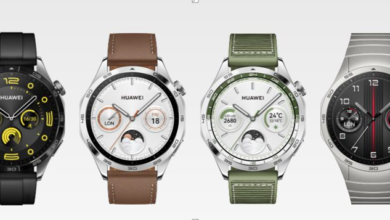Understanding DC to AC Converter Types: Complete Guide

DC to AC converters, often referred to as inverters, play a crucial role in converting direct current (DC) power from sources like batteries, solar panels, and power banks into alternating current (AC) used by most appliances. With different types of inverters available, each designed to meet specific needs, choosing the right type is essential for optimal performance, device compatibility, and energy efficiency. This article dives into the primary types of DC to AC converters, helping you make an informed decision.
Different Types of DC to AC Converter
Pure Sine Wave Inverters
Pure sine wave inverters are the top choice when it comes to quality and compatibility. These converters produce a smooth, consistent sine wave that closely replicates grid electricity. This makes them ideal for sensitive electronics, such as medical devices, laptops, and modern home appliances, which may require a steady flow of clean energy to operate correctly.
Because they offer high efficiency and minimal interference, pure sine wave inverters are also suitable for tools and equipment with variable speed motors, as well as audio or video equipment where distortion or noise could be an issue. Although pure sine wave inverters are generally more expensive than other types, their ability to provide clean and stable energy makes them worth the investment for high-end or sensitive devices. They are often used in home solar systems, RVs, and mobile power setups where reliability and energy quality are paramount.
Modified Sine Wave Inverters
Modified sine wave inverters are more affordable than pure sine wave models, making them a popular choice for simple applications where power quality isn’t a primary concern. These inverters generate a waveform that is a stepped approximation of a sine wave, sufficient for many household devices like lights, small fans, and simple power tools.
However, modified sine wave inverters may not be suitable for all electronics. Devices with more complex power requirements, such as microwaves, laser printers, and certain medical equipment, may experience decreased efficiency or even damage over time. For these reasons, modified sine wave inverters are typically recommended for users with basic power needs or those looking to save on upfront costs without powering sensitive electronics. If you’re considering this type of inverter, evaluate whether your devices require the cleaner power that only pure sine wave inverters can provide.

Square Wave Inverters
Square wave inverters are among the most basic types of DC to AC converters and produce a waveform that is, as the name implies, a straightforward square wave. These inverters are rarely used due to their low compatibility with most modern electronics. The abrupt waveform transitions can cause excessive wear on appliances, reduce efficiency, and create noise or distortion.
Square wave inverters are generally limited to simple, low-cost applications where sensitive electronics are not involved. For example, they might be found in certain low-demand industrial applications or older equipment that doesn’t require smooth power delivery. While they are inexpensive, they are not recommended for general use in today’s home and recreational setups, as pure and modified sine wave inverters offer far superior performance and flexibility.
Multi-Function Inverters
Multi-function inverters are versatile converters that integrate additional features beyond basic power conversion, such as battery charging and grid-tie capabilities. These inverters often come with built-in automatic transfer switches, enabling seamless transitions between different power sources, such as batteries and the electrical grid. Some models are even hybrid, meaning they can combine solar, battery, and grid power for efficient energy management.
These inverters are particularly beneficial for solar systems, RV setups, and backup power solutions, as they simplify power management and provide a flexible response to changing energy demands. Multi-function inverters may come at a higher price, but for users who require adaptable power solutions, they offer excellent value by combining multiple functions into a single, streamlined unit.
Grid-Tie Inverters
Grid-tie inverters are specifically designed to connect with the electrical grid, making them essential for solar panel systems installed in homes and businesses that want to contribute power back to the grid. These inverters convert DC from solar panels into AC compatible with the utility grid, allowing for net metering, where users can earn credits for excess power they feed back to the grid.
Grid-tie inverters are typically pure sine wave inverters, ensuring compatibility and safety with grid standards. They also include safety features that disconnect from the grid during power outages to prevent back-feeding, which can endanger line workers. However, they lack energy storage capability on their own, so users relying solely on grid-tie systems won’t have power during a blackout unless they integrate a battery backup system.
Portable Inverters
Portable inverters are compact, lightweight models that are ideal for mobile power needs, such as camping, tailgating, or powering tools in remote locations. They come in various power capacities and waveform options, from modified sine waves for basic needs to pure sine waves for more sensitive equipment.
One of the main advantages of portable inverters is their easy plug-and-play design, allowing them to connect directly to a vehicle battery or power bank. While they may not offer the same power capacity as stationary units, portable inverters are highly convenient for short-term use and on-the-go applications. For users who only require intermittent AC power, these inverters provide a practical and affordable solution.
Conclusion
Understanding the different types of dc to ac converters is essential for selecting an inverter that meets your power needs and protects your devices. From pure sine wave inverters that provide clean, stable power for sensitive electronics, to portable options that offer flexibility on the go, each type serves a unique purpose. By carefully evaluating your device requirements, environment, and budget, you can find the right inverter that delivers reliable, efficient power for your specific applications. Whether you’re powering a home, RV, or mobile workstation, choosing the correct DC-to-AC converter can enhance energy efficiency and ensure the safety and longevity of your devices.



